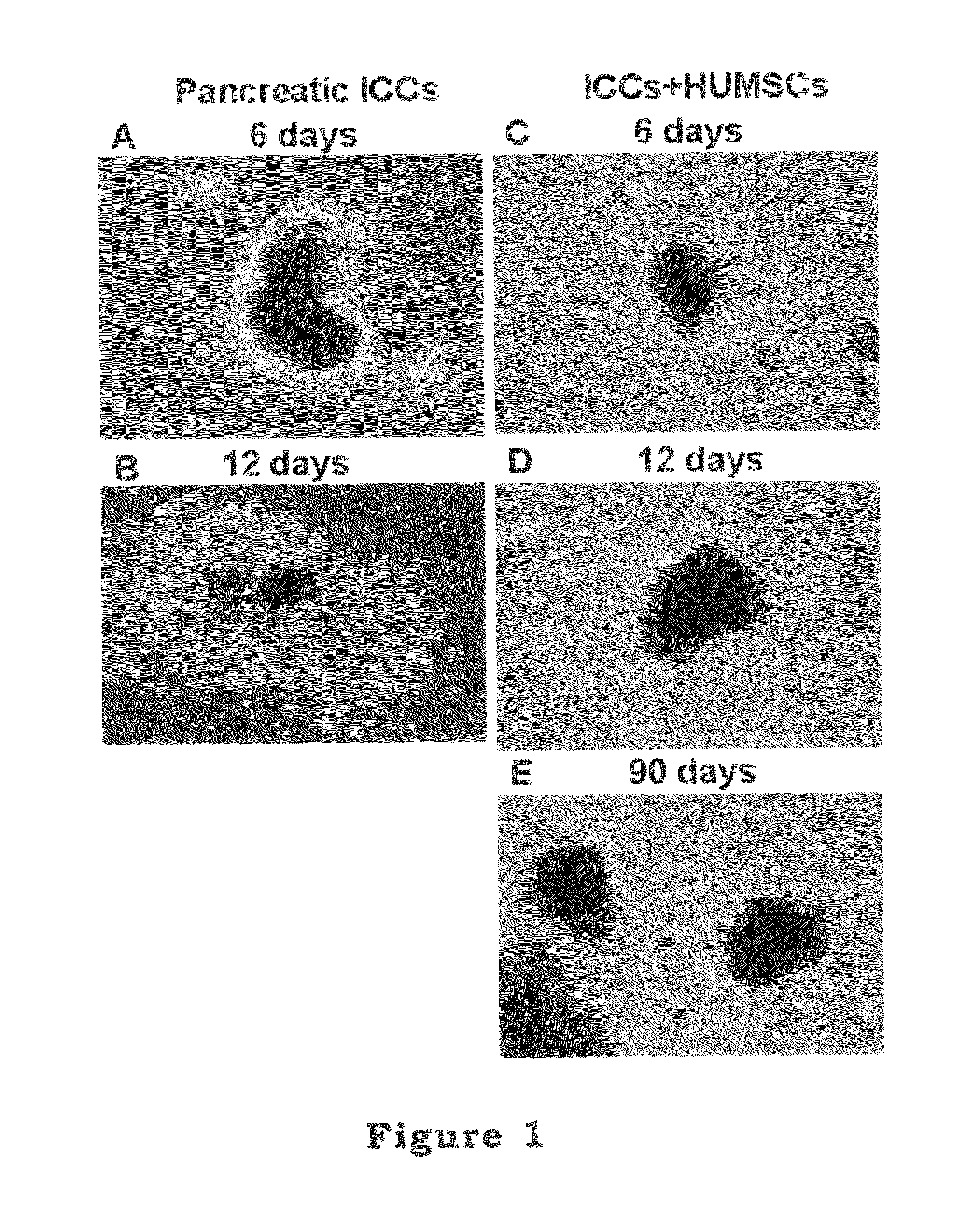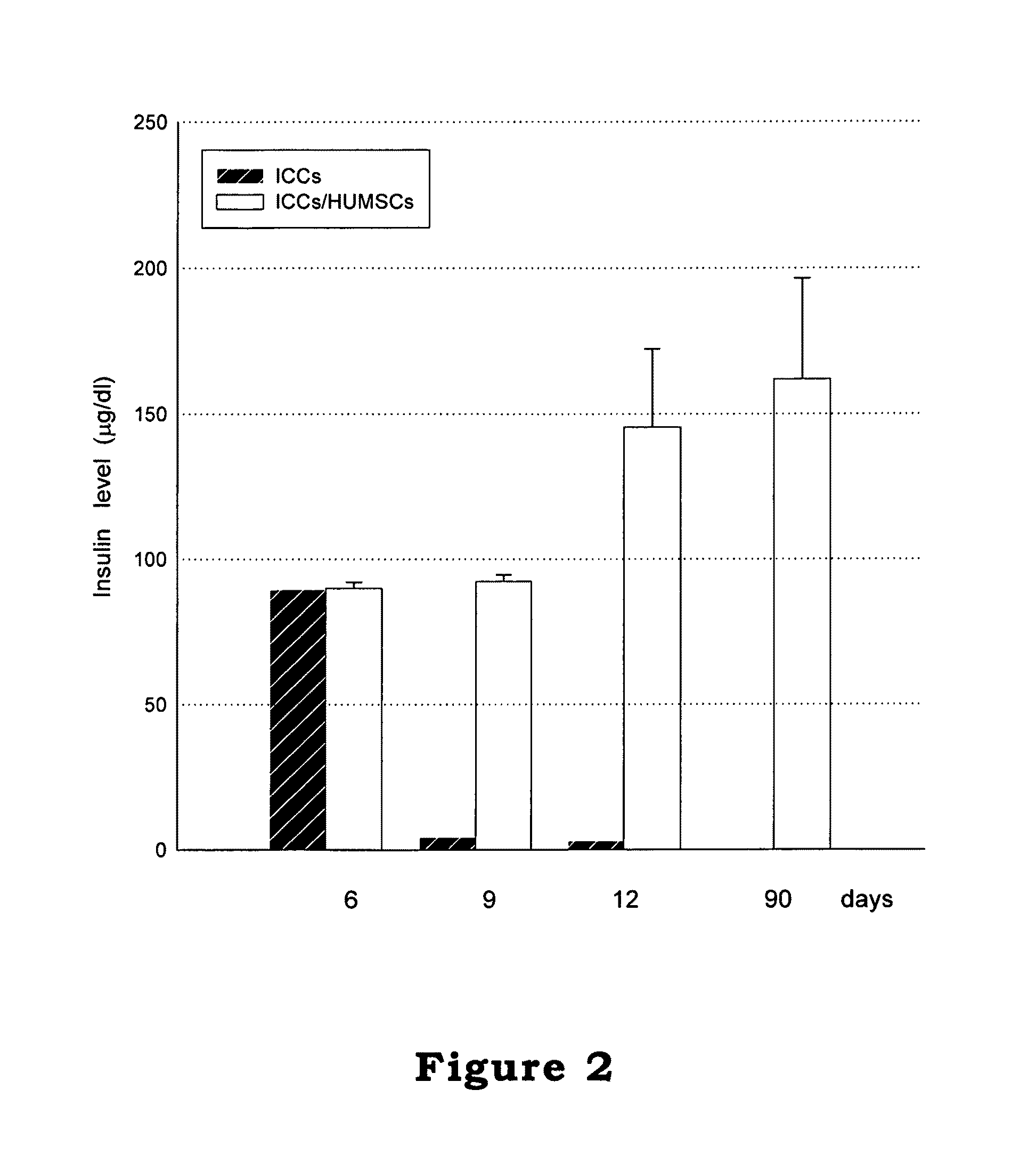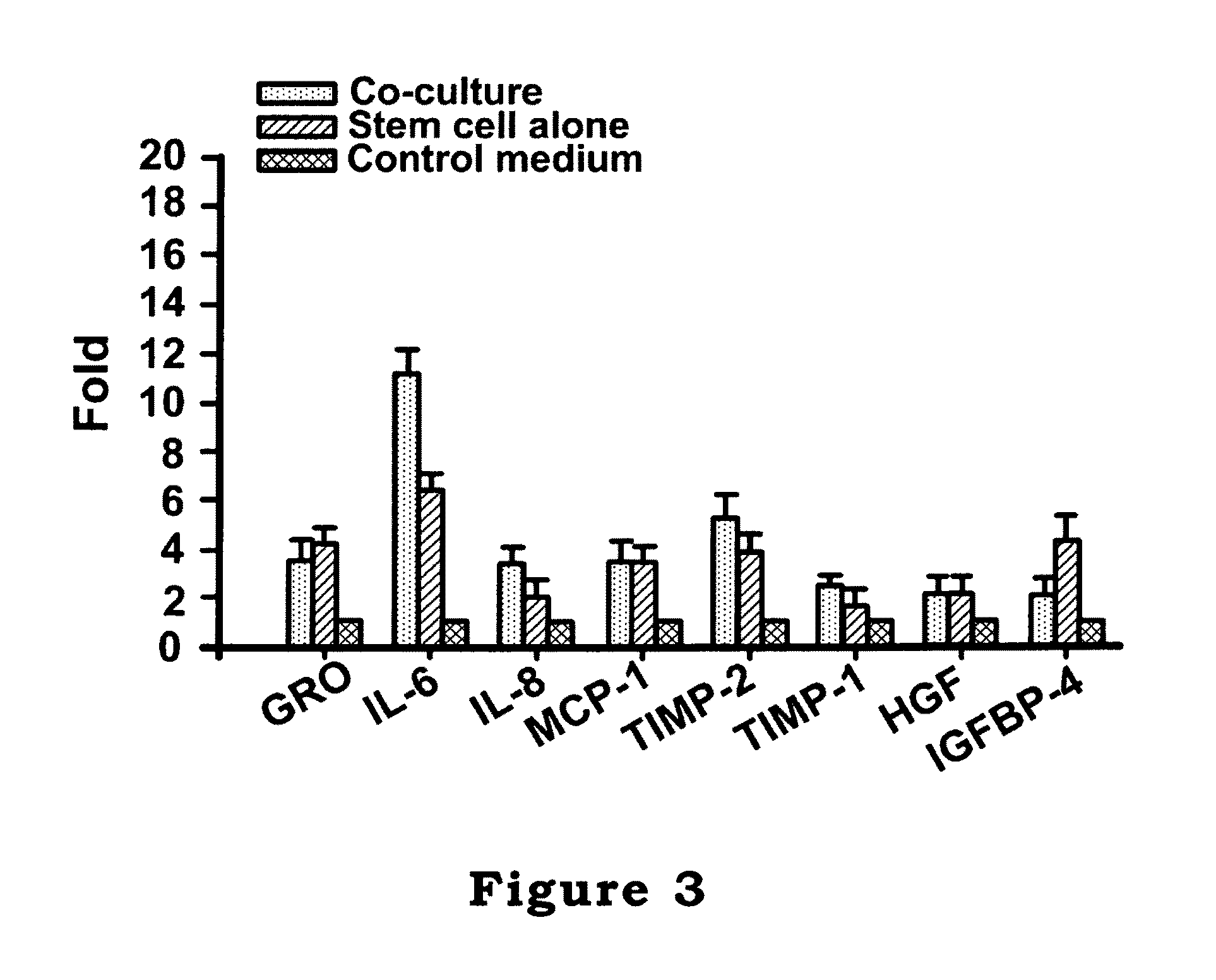Islet cell cluster produced from human umbilical cord mesenchymal stem cells
a mesenchymal stem cell and islet cell technology, applied in the field of cell culture methods, can solve the problems of inability to obtain enough mass purified iccs, inability to produce iccs, degeneration of iccs, etc., to achieve the effect of promoting or maintaining the survival and function of target cells, preventing type i diabetes, and maintaining the survival and function of iccs
- Summary
- Abstract
- Description
- Claims
- Application Information
AI Technical Summary
Benefits of technology
Problems solved by technology
Method used
Image
Examples
embodiment 1
of HUMSCs
[0043]With the consent of the parents, fresh human umbilical cords were obtained after birth and collected in HBSS buffer solution (Gibco) at 4° C. HUMSCs were obtained as previously described by Hu et al. (Conversion of human umbilical cord mesenchymal stem cells in Wharton's jelly to dopaminergic neurons in vitro: Potential therapeutic application for parkinsonism. Stem Cells 24:115-124; 2006). Briefly, the mesenchymal tissue of Wharton's jelly of the umbilical cord was diced into cubes of about 0.5 cm3 and centrifuged at 250×g for 5 minutes; and then the mesenchymal tissue was treated with collagenase type I (Sigma) at 37° C. for 18 hours, washed and further digested with 2.5% trypsin (Gibco) at 37° C. for 30 minutes. The digested mixture was then passed through a 100 μm filter to obtain cell suspensions. Then the cell suspensions were centrifuged at 250×g for 5 minutes. The HUMSCs culture medium consisted of Dulbecco's modified Eagle's medium / F12 (DMEM / F12, 25 mM glucos...
embodiment 2
of Co-Culture System
[0044]Seven-day postnatal Sprague-Dawley rats were used for preparation of pancreatic cells and ICCs formation. The study was approved by The Animal Research Committee of The College of Medicine, National Taiwan University. After rats were sacrificed, pancreases were removed and cut into small pieces, and then incubated in 2 ml medium supplemented with 3 mg collagenase for 20 min at 37° C. Re-suspended to the collagenase-free medium and centrifuged at 1500 r.p.m. for 3 min. The final pellets were suspended in 12 ml DMEM / F12, 2% fetal bovine serum, 1 mM glutamine, and 10 mM nicotinamide. For preparation of co-culture system, HUMSCs were cultured in 6-well plates with 80% confluence at 37° C. Place the inserts into each prepared well with the membrane towards the well bottom, ensuring no air is trapped. Add 2 ml of single pancreatic cell suspensions to the interior of each insert (pore size 3.0 μm or 0.2 μm, Nunc).
[0045]During pancreatic cells culture, less than 30...
embodiment 3
tification Assay
[0047]To test whether ICCs co-cultured in embodiment 2 still have functional characteristics of islets, we will inspect whether the activity of insulin secreted by cell is normal. The supernatants of ICCs culture and ICCs / HUMSCs co-culture medium were harvested every 3 days for insulin detection using a rat insulin-ELISA-kit (enzyme linked immunosorbent assay kit, Mercodia, Sweden). After acquiring the medium, washed plate 5 times with PBS and changed medium every 3 days.
[0048]See FIG. 2, on day 6, the insulin levels of ICCs culture and ICCs / HUMSCs co-culture are 89.43±3.32 and 89.97±2.12 μg / L, respectively. However, the insulin levels in ICCs culture medium rapidly declined on day 9 (4.23±0.64 μg / L) and day 12 (2.87±0.09 μg / L). Meanwhile, the insulin levels in ICCs / HUMSCs co-culture still gradually increased on day 9 (92.35±2.18 μg / L), day 12 (145.40±26.85 μg / L), and even lasted to day 90 (160.30±31.92 μg / L). In addition, there was no human insulin detected in ICCs / ...
PUM
| Property | Measurement | Unit |
|---|---|---|
| pore size | aaaaa | aaaaa |
| pore size | aaaaa | aaaaa |
| size | aaaaa | aaaaa |
Abstract
Description
Claims
Application Information
 Login to View More
Login to View More - R&D
- Intellectual Property
- Life Sciences
- Materials
- Tech Scout
- Unparalleled Data Quality
- Higher Quality Content
- 60% Fewer Hallucinations
Browse by: Latest US Patents, China's latest patents, Technical Efficacy Thesaurus, Application Domain, Technology Topic, Popular Technical Reports.
© 2025 PatSnap. All rights reserved.Legal|Privacy policy|Modern Slavery Act Transparency Statement|Sitemap|About US| Contact US: help@patsnap.com



